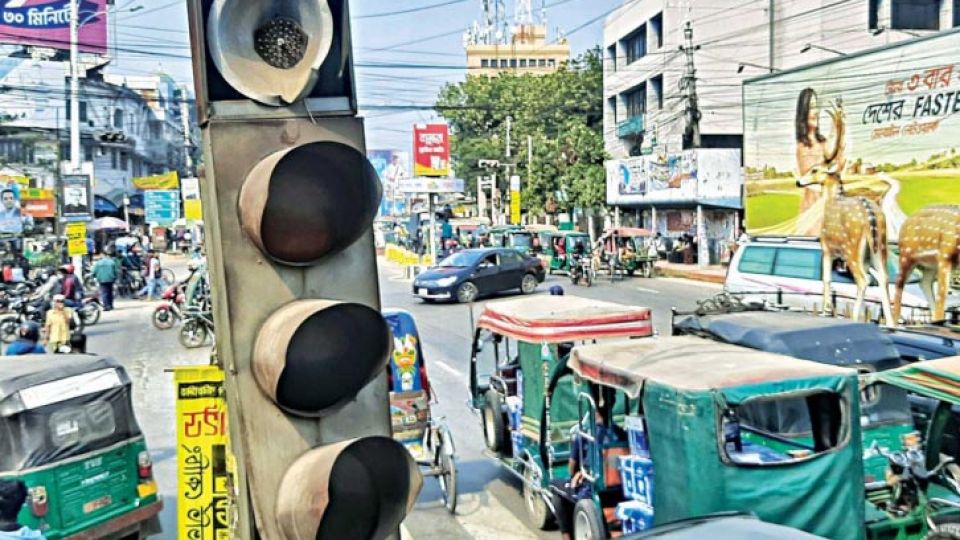March 31, 2022
Recently, the mayor of Dhaka North City Corporation recommended an odd-even-car-rationing solution to Dhaka’s perennial traffic problem. Previously, a similar method was adopted in New Delhi. Its benefits and drawbacks, as experienced by residents in India’s capital, are more or less known. However, when we compare the public transportation facilities and overall civic facilities in both capitals, we find massive disparities. In Delhi, people can rely on public transportation, but in Dhaka, there simply aren’t enough roads, railway tracks, and public spaces, not even a functioning traffic monitoring system.
To be frank, there can be no single, universally applicable solution to the traffic problem, so allow me to drop my two cents in this regard with some recommendations that I think we can implement. While I’m just a citizen and no expert on traffic management, I think these and other solutions as offered by experts indicate the sense of urgency that must go into any effort.
First, I think each institution with more than a hundred students or employees who commute on a daily basis—such as schools, universities, corporate houses, factories, etc.—must have a shared transportation system on a common route. Students should be supplied with enticing perks such as free passes and well-behaved, well-educated transit staff to encourage them to use public transportation. Many students from wealthy families use private cars to get to and from school, as seen on the streets of Dhaka. Our children should be taught the virtues of sharing for the sake of the city. It is our responsibility to teach them how to use and protect public facilities and spaces.
Second, Rajdhani Unnayan Kartripakkha (RAJUK) has a vital role to play in road network mapping and, therefore, traffic control. Since every city should have an adequate quantity of public spaces, roads, and recreational facilities, city managers and planners including RAJUK should be more innovative and offer solutions that are future-proof. Before approving new offices, factories, schools, shopping malls and other establishments, RAJUK should consider our existing challenges and resource constraints. All departments working with the city’s spaces, buildings and networks should coordinate with each other before formulating and implementing any policy in this regard.
Third, I would advocate for the expansion of Dhaka’s existing railway networks. The express railways should be expanded further. Dhaka’s external zones should be connected and designated as such. Rail services should be integrated with the metro lines, with trains running every 2–5 minutes inward and outward. The metro train services and stations in Dhaka city will need to be expanded to places where people can easily get on buses or other public vehicles.
Fourth, the Bangladesh Road Transport Authority (BRTA) should be more careful about the condition of motor vehicles and the training of its staff. It is the job of the BRTA to make sure that public transportation workers have decent wages, adequate facilities, education, and training. A separate entity as part of the ministry could be set up to do these things. A special law should be passed that would require bus owners to provide certain facilities for their workers. The roadworthiness of any vehicle plying our streets, and the eligibility of drivers, should be kept in mind.
Fifth, automation of vehicle entry doors, fee payments, and a centralised system of monitoring are paramount. Considering the sheer size of this city and the number of public buses that operate here, a central monitoring system, combined with a digital payment system, will address practically all of the difficulties that we face. These goals can be achieved by using existing technologies with the help of local professionals. Aside from that, the road safety law should be properly and evenly implemented to bring some semblance of order to our otherwise chaotic transport sector. It will also help if bus owners are held accountable for any accident or disorder caused by their vehicles, drivers and other staff.
Finally, there should be more U- loops, underground passages and such structures that can help large crowds of people move without putting additional burden on the roads.
Dhaka is one of the most populated cities in the world with extremely inadequate road coverage, so bringing discipline on its roads and reducing traffic jam would be a herculean task. We can only tackle the challenges of maintaining this massive population hub by sharing and correctly utilising our resources.


